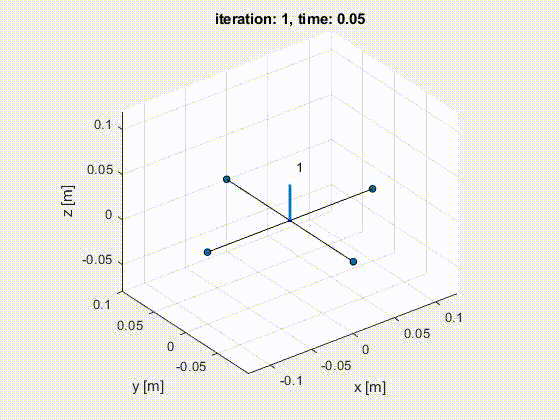Overview
As a part of University of Pennsylvania’s MOOC on Aerial Robotics, I implemented PD control for a quadrotor in 1D, 2D and 3D. Additionally, I also generated a minimum snap trajectory using a 7th-order polynomial.
1D Quadrotor Control
PD controller was implemented for the height control of the quadrotor. Proportional gain (Kp) and Derivative gain (Kd) were tuned for two objectives.
Hover Control
The quadrotor was stabilised at z = 0m
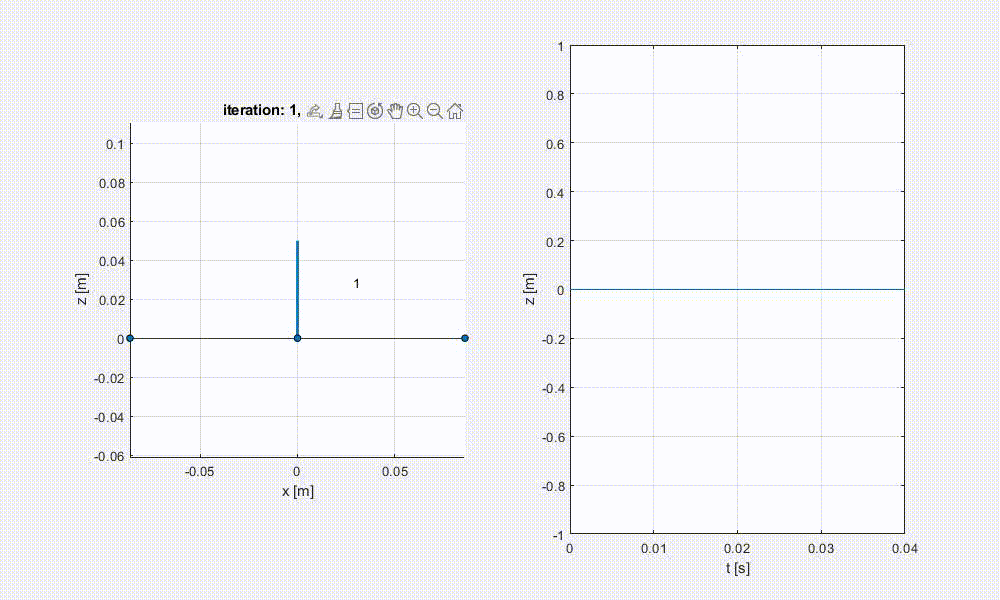
Step Response
The quadrotor was given a desired height of 1m. The rise time was kept less than 1 second and maximum overshoot was capped at 5%
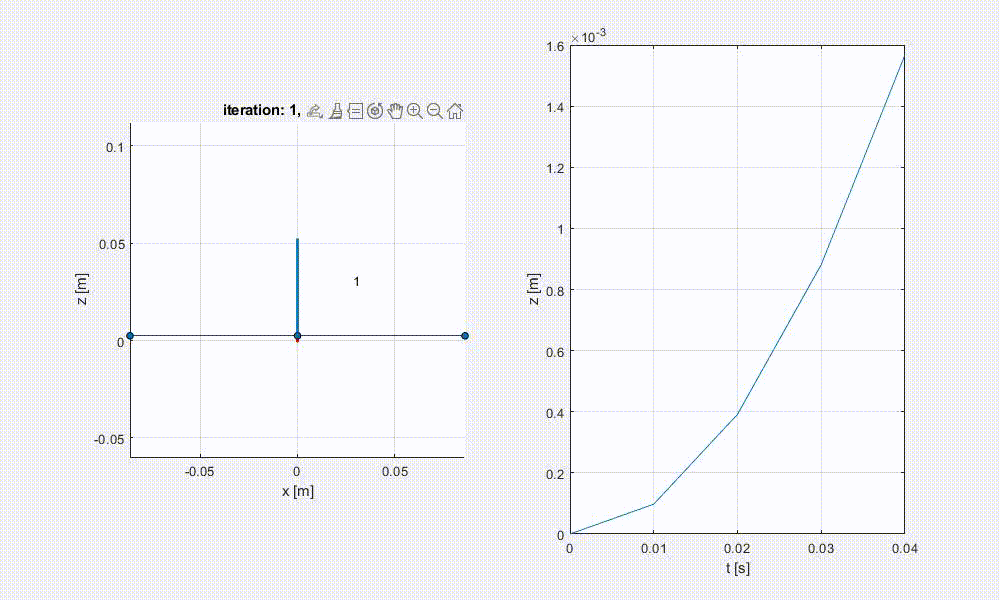
2D Quadrotor Control
After performing 1D control, next objective was to implement PD control to track trajectories in the 2D (Y-Z) plane.
Linear Trajectory
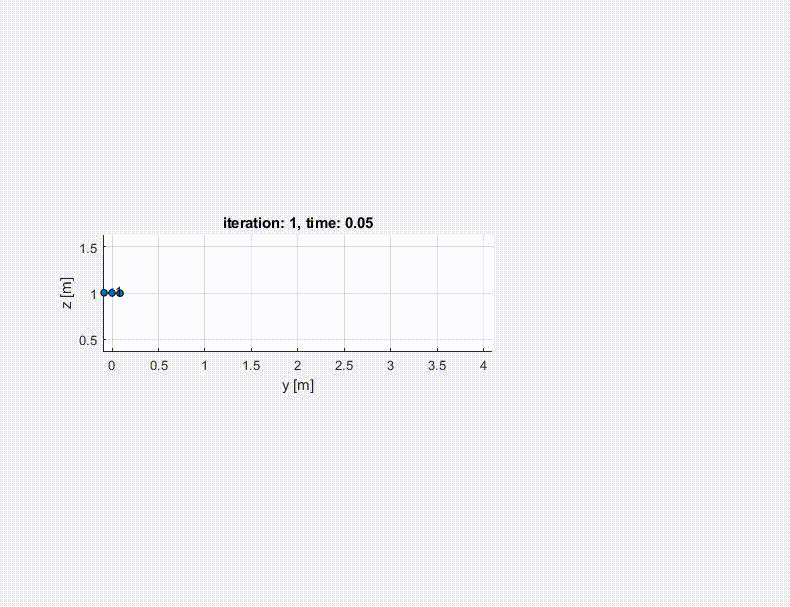
Sinusoidal Trajectory
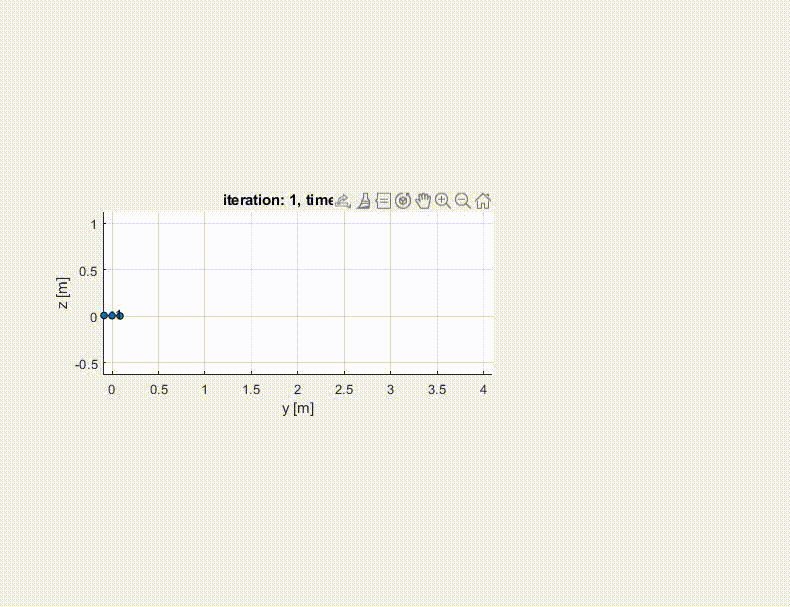
3D Quadrotor Control
Both Linear and Helical trajectories were tracked using a PD controller.
Linear Trajectory
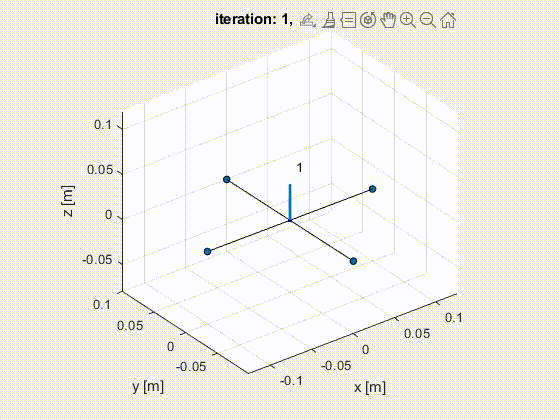
Helical Trajectory
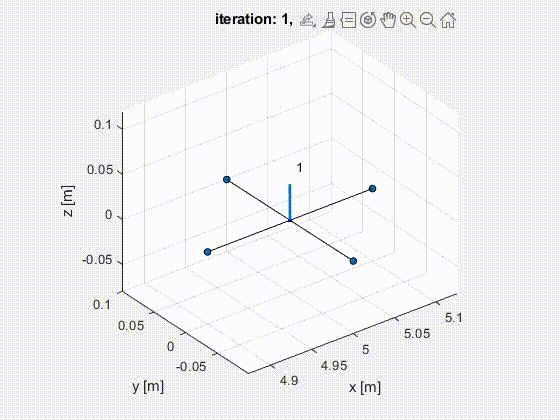
Minimum Snap Trajectory
Minimum Snap is trajectory generation technique to generate optimal trajectories while satisfying position, velocity and acceleration constraints. This is based on a paper by D. Mellinger et al. - “Minimum snap trajectory generation and control for quadrotors,” presented at IEEE International Conference on Robotics and Automation, Shanghai, China, 2011.
In this simulation, a minimum snap trajectory was generated using 7th order polynomial for a given set of waypoints.
